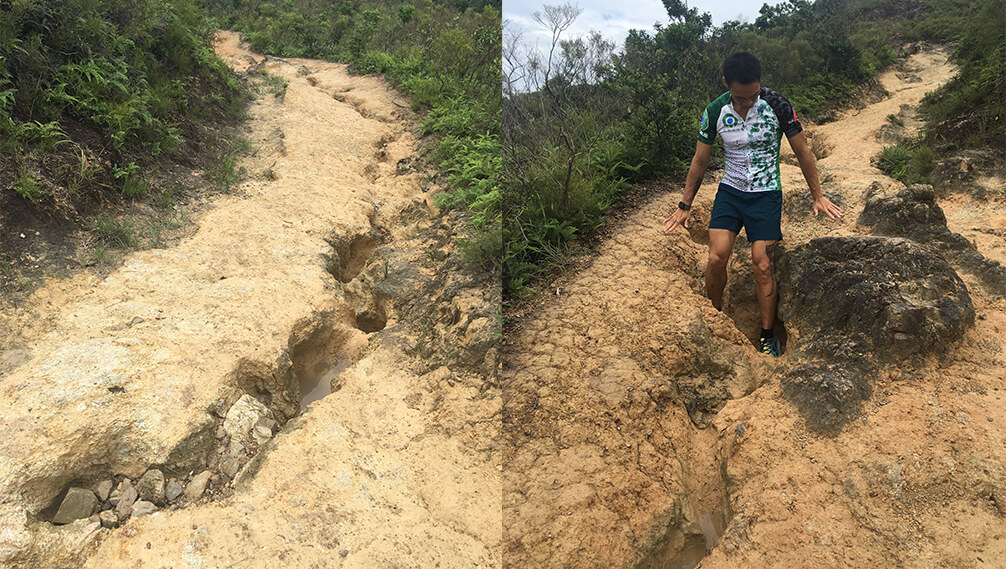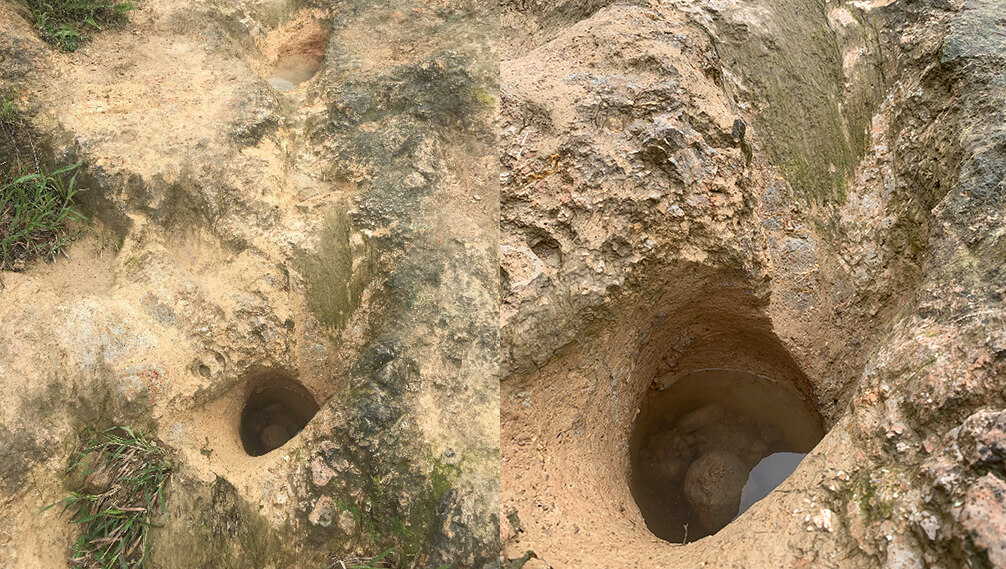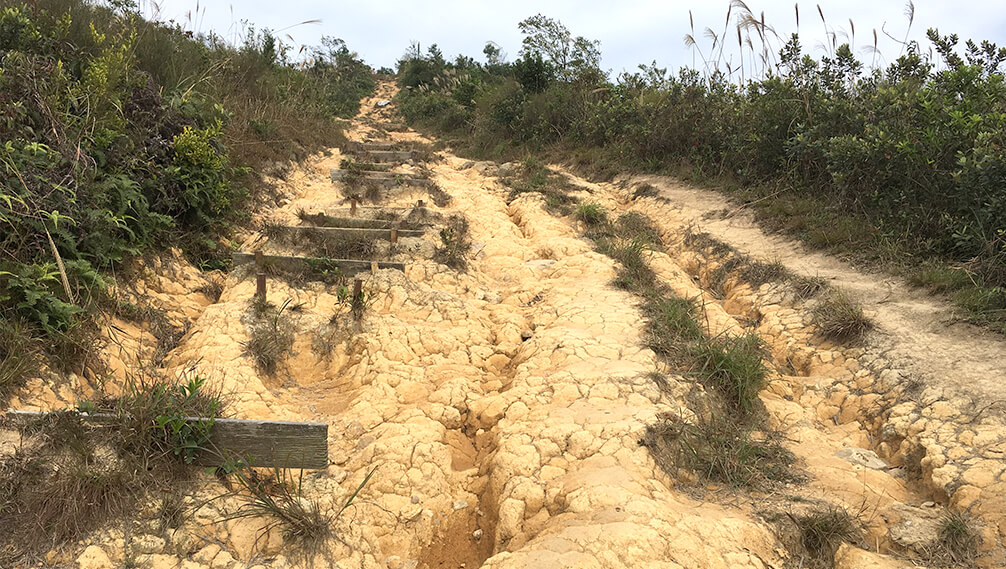OUR RPOGRAMME
THE CHALLENGES THAT NATURE TRAILS IN HONG KONG AND THEIR NEIGHBOURING ENVIRONMENT ARE FACING

SOIL EROSION
Soil erosion is a natural process in which topsoil displaces by dynamic activities of wind and water, leading to possible soil degradation. However, the usage of trails increases with the frequency and intensity of tourists and trail events these years, which accelerates the degradation of popular trails. Different types of erosion therefore occur, such as the formation of gullies.

Can you observe soil erosion on the trails?
GULLIES
The gullies through which runoff water and abrasive particles flow will be deepened and widened if no mitigation measure is taken.
photo : MacLehose Trail Section 3

EXPOSED ROOTS
Erosion reduces soil support to trees which then may easily fall.
photo : MacLehose trail section 3

ISLAND EFFECT ON PLANT COMMUNITY
A path was divided into two.
Plants situated in between are isolated and will receive less water and nutrients.

POTHOLES
Potholes form when rainwater with stones erodes soils and spins in the concave.

DISAPPEARING STEPS
Stairsteps could not sustain if we do not make waterflow gentle.


WIDENING PATH
Visitors sometimes do not want to climb staircases or step in puddles so they may walk off-trail. Stepping on vegetation aside the paths would however halt the growth of plants. Those paths will be widened with no more greenery.
photo : MacLehose Trail Section 4

CREATE SHORTCUT CAUSALLY
Shortcuts are often found at S-shaped trails. Quick-tempered hikers tend to open up a more direct path through steping on vegetation and adversely affect growth of plants.
photo : MacLehose Trail Section 3

CONCRETISATION
Trails paved with cements do not integrate with the natural environment.
